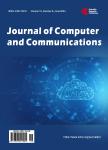Nelder-Mead Based Iterative Algorithm for Optimal Antenna Beam Patterns in Ad Hoc Networks
Nelder-Mead Based Iterative Algorithm for Optimal Antenna Beam Patterns in Ad Hoc Networks作者机构:Department of Electrical & Computer Engineering University of Wyoming Laramie WY USA
出 版 物:《Journal of Computer and Communications》 (电脑和通信(英文))
年 卷 期:2017年第5卷第7期
页 面:117-134页
学科分类:080904[工学-电磁场与微波技术] 0810[工学-信息与通信工程] 0809[工学-电子科学与技术(可授工学、理学学位)] 08[工学] 080402[工学-测试计量技术及仪器] 0804[工学-仪器科学与技术] 081001[工学-通信与信息系统]
主 题:Phased Array Adaptive Antennas Beamforming Ad Hoc Networks Network-Wide Optimization Low Hardware Complexity Global Performance Improvement
摘 要:Directional antennas shape transmission patterns to provide greater coverage distance and reduced coverage angle. Use of adaptive directional antenna arrays can minimize interference while also being more energy efficient. When used in an ad-hoc network, this reduces interference among transmitting nodes and thereby increases throughput. Such “smart antennas use digital beamforming based on signal processing algorithms to compute the appropriate weights to form effective antenna patterns. Smart antennas require the knowledge of the signal received at each antenna in the antenna array, thereby increasing the complexity of hardware and cost. Also, conventional smart antennas optimize results for each individual node, while it is preferable to have a global optimal solution. A problem that has not been addressed is how to compute individual beam patterns that maximize some measure of global network performance. Historically, the focus has been on finding node antenna patterns that give locally optimal performance. In this paper, we investigate a low hardware complexity beamforming approach aimed at improving global performance that uses average Noise-to-Signal ratio as the performance measure. Given a multi-hop route from source to destination, beam patterns are shaped to maximize average signal-to-noise ratio across all nodes on the route, which reduces bit-error rates and extends battery and network lifetime. The antenna weights are sequentially adjusted across all nodes in the route to achieve optimization across the network. By using phase-only weights, hardware costs are minimized. The performance of the algorithm using different path loss models is explored.



